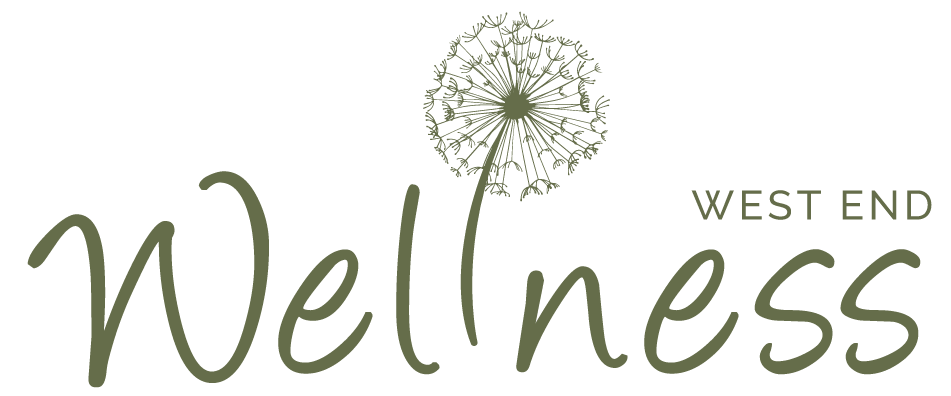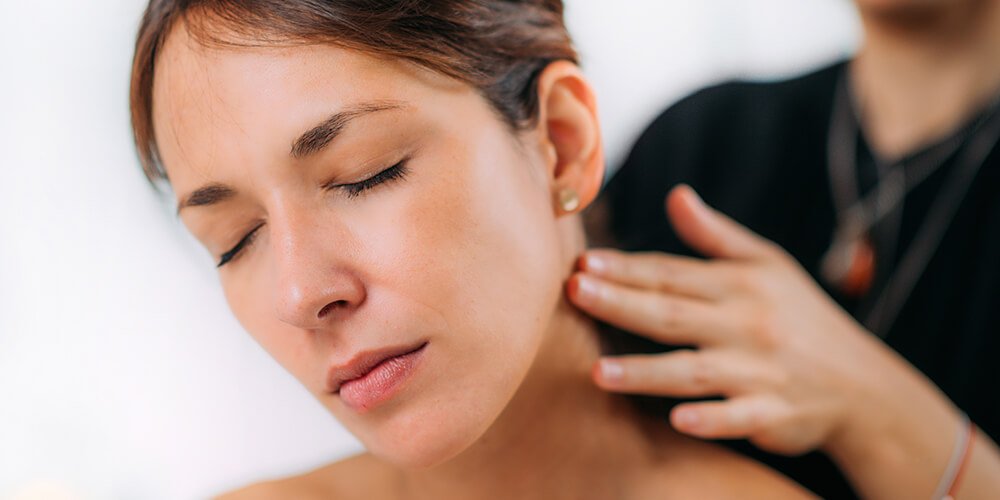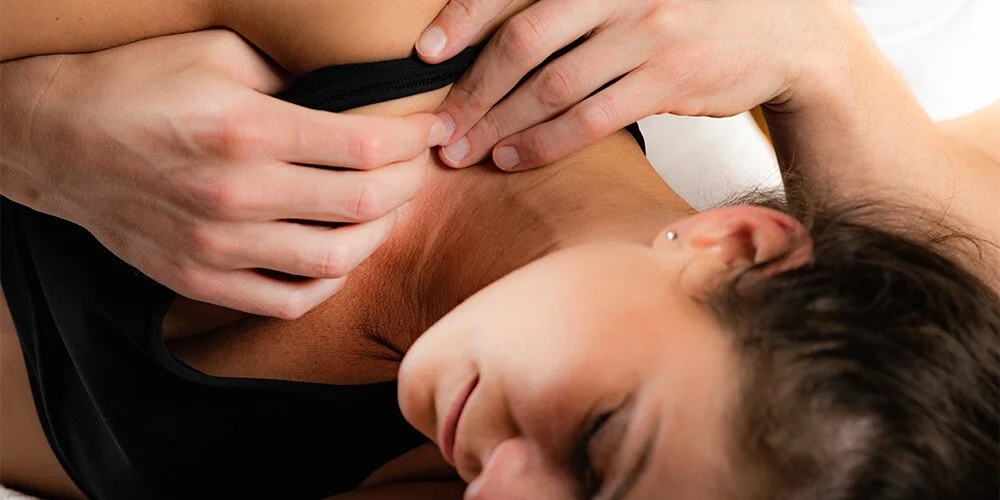Lymph Node Massage: A Natural Approach to Wellness
Table of Contents Show
Quick Summary
This article is about lymph node massage, a technique that can improve your overall health and well-being. It works by gently stimulating the flow of lymph fluid, which helps reduce swelling, eliminate toxins, and boost your immune system.
The article provides information on how to perform lymphatic drainage massage at home safely, including important things to do and avoid. It also discusses signs that your lymphatic system might be clogged and the benefits of professional lymphatic drainage massage.
Have you ever felt a little sluggish, like your body just isn't operating at its full potential?
Or maybe you've noticed some swelling or discomfort that won't seem to go away?
While there are multiple reasons to explain this, one possible reason could be surrounding your lymph nodes and the lymphatic system.
At West End Wellness, clients have come in with these exact concerns. So, we are taking this as an opportunity to not only explain what you have and help assure you that these are normal feelings, but we can hopefully explain and give you a path to reduce or manage your discomfort.
We'll also guide you through the three major lymph node areas and share tips on when to seek professional help.
Before we get into this, we would like to share a recent experience one of our registered massage therapists had with their patient, Emily, who experienced persistent swelling and fatigue after a prolonged illness. She found remarkable relief and rejuvenation through the specialized treatment of lymph node massage drainage.
Emily's journey is a testament to the power of lymph node massage. She felt immediate relief from swelling and noticed a significant boost in her energy levels. With our expert guidance and some at-home techniques, Emily's lymphatic health improved drastically, allowing her to enjoy her daily activities without discomfort.
So, are you ready to unlock the power of lymph node massage drainage and give your body the boost it deserves?
What is the Lymphatic System?
Before we discuss the specifics of lymph node massage, let's briefly discuss the lymphatic system itself. This vital network of vessels, tissues, and organs plays a crucial role in keeping the body healthy and functioning properly.
The lymphatic system is an integral part of the immune system and is responsible for transporting fluid, nutrients, and waste products throughout the body. The lymphatic system also fights infection by removing toxins from the bloodstream.
Why Lymph Node Massage is a Game-Changer
Now, here's the thing: sometimes, our lymphatic systems can get a little backed up, causing fluid to build up in certain areas of the body. This can lead to swelling, discomfort, and even a weakened immune response. That's where lymph node massage drainage comes in!
By gently massaging and stimulating the lymph nodes and vessels, we can help encourage the proper flow of lymph fluid, allowing it to do its job of removing waste and transporting those all-important immune cells. It's like giving your lymphatic system a well-deserved reset button!
But wait, there's more! Lymph node massage drainage can also provide a whole host of other benefits, including:
Reduced swelling and lymphedema (fluid buildup)
Improved circulation and oxygen delivery
Relief from muscle aches, tension, and even fibromyalgia symptoms
A strengthened immune system (hello, goodbye colds and flu!)
It sounds pretty great, right? And the best part? You can do it right in the comfort of your own home!
So, are you ready to unlock the power of lymph node massage drainage and give your body the boost it deserves?
What is Lymph Node Massage Drainage?
Now that we appreciate the purpose of our lymph nodes and what our lymphatic system (the network of vessels and nodes that carry lymph fluid) does, we have to also be aware that they can get a little clogged up.
This is something that any person can experience and is relatively common, especially under certain conditions. However, it can vary widely based on individual health and lifestyle factors. Some of the reasons for clogged or congested nodes are:
Infections: When you're fighting an infection, your lymph nodes can become swollen and congested as they work to filter out the bacteria or viruses.
Injury or Surgery: Trauma to the body, including surgeries, can damage lymph vessels and nodes, leading to blockages.
Lack of Movement: The lymphatic system relies on muscle movement to help move lymph fluid. A sedentary lifestyle can slow down lymph flow, causing congestion.
Illnesses: Certain medical conditions, like lymphedema or cancer, can directly affect lymph nodes and cause blockages.
Stress: High levels of stress can impact your immune system, including the lymphatic system, leading to sluggish lymph flow.
These can lead to swelling and discomfort and even affect our immune system's ability to do its job properly. That's where lymph node massage drainage comes in handy!
So, if you or someone you know experiences clogged lymph nodes, staying active, managing stress, and maintaining overall health can help reduce the risk.
Regular lymphatic drainage massage can also be a preventive measure to keep the lymphatic system functioning well.
If you're not dealing with pain, maybe you're wanting to find a way to relieve stress. Here we discuss how acupuncture can help.
What Are The Three Major Lymph Node Areas?
Lymph nodes are small, bean-shaped organs that are part of the lymphatic system and are found throughout the body. The three major areas where lymph nodes are concentrated are:
Cervical Lymph Nodes: These are located in the neck and are responsible for filtering lymph fluid from the head and neck region. They are often the ones that swell when you have a throat infection or a cold.
Axillary Lymph Nodes:: These are found in the armpits and filter lymph fluid from the arms, chest, and upper abdomen. They play a crucial role in the body's response to infections and other conditions in these areas.
Inguinal Lymph Nodes: These are situated in the groin area and filter lymph fluid from the lower abdomen, pelvis, and legs. They help in managing infections and other issues in the lower part of the body.
These three areas - the neck, underarms, and groin - act as major drainage stations and highways for your lymphatic system. Massaging them properly opens up the floodgates to allow backed-up lymph fluid to exit swollen areas and reroute to functional nodes.
Of course, there are other lymph node areas throughout the body, like behind the knees and in the abdomen. But focusing on the neck, pits, and groins tends to provide the biggest lymphatic drainage bang for your buck.
So, next time you're doing some self-massage, be sure to give those key areas some extra love! Your lymphatic system will thank you.
The Benefits of Lymph Node Massage Drainage
Okay, so why should you even bother with this whole lymph node massage thing? Well, let me lay it out for you:
1. Reduces Swelling and Lymphedema
If you've ever had issues with swelling, especially in your arms or legs, lymph node massage can be a game-changer. Improving the flow of lymph fluid can help reduce that pesky swelling caused by conditions like lymphedema (that's when lymph fluid builds up in certain areas because it can't drain properly).
2. Boosts Immune Function
Remember how I mentioned that lymph fluid carries away waste and toxins? Well, it also transports those hard-working white blood cells that fight off infections and illnesses. By keeping that lymph fluid moving, you're essentially giving your immune system a little boost. Who doesn't want that?
3. Improves Circulation
Lymph node massage isn't just about the lymphatic system. It can also improve overall circulation, which means better delivery of oxygen and nutrients to your cells. That's a win-win situation if you ask me!
4. Relieves Pain and Discomfort
If you're dealing with muscle aches, tension, or even fibromyalgia, lymph node massage can provide some much-needed relief. Promoting better fluid flow can help reduce inflammation and ease pesky aches and pains.
Improves circulation: It can help reduce swelling and promote overall circulation.
How to Perform Lymph Node Massage at Home
I know what you're thinking: "Can I do this lymph node massage at home?" Absolutely!
While it's always best to learn from a professional massage therapist or healthcare provider, you can try some simple techniques at home. Just remember to go easy and listen to your body.
Lymphatic Breathing
Let's start with some deep breathing exercises. These act like a pump, helping move that lymph fluid through your vessels and nodes. Here's what you do:
Place your hands on your ribs
Take slow, deep breaths, feeling the air move down to your abdomen
Exhale slowly through your mouth
Repeat 5 times, taking breaks between breaths
Neck and Underarm Massage
Next up, we'll focus on the neck and underarm areas, where you'll find some important lymph nodes:
For the front and sides of your neck, use your index and middle fingers to stretch and slide the skin downward toward your shoulders gently. Repeat 10-15 times.
For under your arms, cup your palm under your armpit and gently pump upward toward your body. Repeat on both sides.
Arm and Leg Massage
Now, let's move on to those limbs:
For your arms, start at the shoulder and use your palms to gently stretch the skin upward, working your way down to the wrist.
For your legs, start at the top of your thigh and use one hand on the inside and one on the outside to stretch the skin upward, working your way down to the foot.
Always use light pressure and upward strokes to encourage lymph fluid to flow in the right direction.
When to Seek Professional Help
While lymph node massage can be a great at-home remedy, there are some situations where you'll want to seek professional help from a lymphedema therapist or other qualified healthcare provider:
If you have a history of cancer or have had lymph nodes removed
If you have an active infection or cellulitis (a serious skin infection)
If you have a heart condition or other underlying health issues
If you're experiencing severe swelling or discomfort
It's always better to be safe than sorry, especially regarding your health.
Light pressure: Lymph node massage uses very gentle pressure to move fluid.
FAQ
Is it safe to perform Lymph Node Massage at home?
One of the great things about lymph node massage is that you can try it in your home. But before you get started, there are a few important safety tips to keep in mind.
Important Things to Do:
Use Light Pressure: The lymphatic system is close to the skin’s surface, so use gentle, light pressure with your fingers or hands.
Follow the Flow: Always massage in the direction of lymph flow—typically towards the heart and away from the extremities.
Hydrate: Drink plenty of water before and after the massage to help flush out toxins.
Be Consistent: Regular, gentle sessions will yield the best results. Aim for a few minutes each day or several times a week.
Relax: Ensure you're in a calm, comfortable environment. Being relaxed will enhance the effectiveness of the massage.
Important Things to Avoid:
Avoid Deep Pressure: Unlike other types of massage, lymphatic drainage requires only light pressure. Avoid pressing too hard to prevent damage to the lymphatic vessels.
Skip If You're Sick: If you have an active infection or illness, it's best to avoid lymphatic massage until you've recovered.
Avoid Damaged Skin: Do not massage areas with cuts, infections, or inflammation to prevent further irritation.
Medical Conditions: If you have a medical condition such as heart problems or a history of blood clots, consult your doctor before starting lymphatic drainage massage.
Does massaging lymph nodes help drain them?
Absolutely! Massaging your lymph nodes is a fantastic way to get that lymphatic system flowing and draining properly.
Lymphatic drainage massage is typically performed with light pressure and specific movements to ensure it is both effective and gentle, avoiding any potential damage to the lymphatic vessels or nodes.
How do I know if my lymphatic system is clogged?
Our lymphatic systems are pretty good at letting us know when something's amiss. Here are some key signs that yours might be a little backed up:
Swelling: This is one of the biggest red flags. If you notice persistent puffiness or swelling in your extremities like your arms, legs, hands or feet, it could be a sign of poor lymphatic drainage in those areas. The same goes for swelling in your abdomen, chest or neck regions where lymph nodes are concentrated.
Tightness or Heavy Feeling: Along with swelling, you might experience tightness, heaviness, or aching in your limbs or torso. It's kind of like carrying around water weights all day—not fun!
Fatigue or Body Aches: When your lymphatic system isn't running smoothly, toxic buildup may leave you feeling drained of energy or achy all over. It's like your body's sanitation workers are on strike.
Respiratory Issues: Believe it or not, lymph nodes are found in your neck, chest and armpits. So lymphatic congestion in those areas could potentially contribute to respiratory problems like chronic cough or sinus issues.
Puffy Face or Bags Under Eyes: That lovely "morning after" puffy face or under-eye bag look? Yep, you guessed it – often a sign of lymph fluid accumulating around your head and neck region.
Suppose you're experiencing a combination of these symptoms with no obvious cause. It might be worth investigating whether your lymphatic system needs a little love through massage, exercise, or other therapies.
But as always, check with your doctor, especially if symptoms are severe or persistent.
The Bottom Line on Lymph Node Massage Drainage
So, hopefully, you have learned and gained a new appreciation for lymph nodes and the lymphatic system.
Seeking a professional massage therapist for lymph node drainage can be a transformative step toward enhancing your overall health and well-being.
This specialized massage technique stimulates the flow of lymph fluid, reducing congestion and promoting a healthier immune system.
By addressing common issues like swelling, toxin build-up, and sluggish lymph flow, lymphatic drainage massage can leave you feeling more energized and revitalized.
If you have any questions or concerns, speak to a professional massage therapist with expertise in this field to help and show you the proper techniques, ensuring that the massage is effective and gentle.
Regular sessions can help maintain a healthy lymphatic system, support your body's natural detoxification processes, and improve circulation.
Whether recovering from surgery, managing stress, or simply looking to boost your immune health, lymphatic drainage massage offers a natural and soothing solution.
Just remember to start slow, listen to your body, and don't hesitate to seek professional help if you have any concerns. Your lymphatic system (and your immune system) will thank you!
If you have any further doubts or questions regarding this subject or another treatment, contact one of our experienced Acupuncturists or Registered Massage Therapists here at West End Wellness Clinic. You can either give us a call or make an appointment.
Disclaimer: Please remember this article is for informational purposes only and should not replace professional medical advice. Please consult a healthcare provider or someone with the correct qualifications before starting any new exercise or treatment program.




